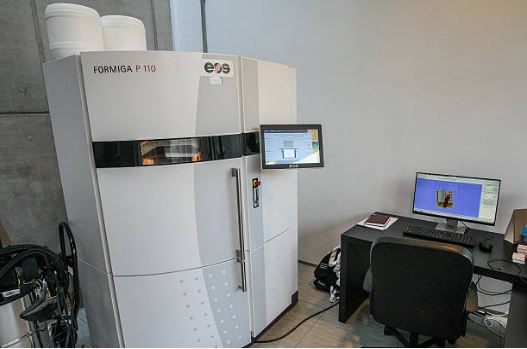
(Credit: Getty Images)
With the help of some designing, a few grams of plastic filament and a 3D printer, researchers in the University of Helsinki made a unique device for studying chemical reactions, and improved their experimental processes.
It started as a side project. Dr Gianmario Scotti from the University of Helsinki, Finland, was fed up working in the cleanroom about 15 km away from his lab. The microchips intended for mass spectrometry analysis had to be prepared in bigger batches, as there was no point spending time suiting up and using the cleanroom for just a single device at a time. That of course meant waiting for the batch to be ready before it could be used by the research group, and the work was not proceeding as fast as one would wish.
Gianmario Scotti and Markus Haapala, from the neighbouring research group, had an idea. Maybe they could skip the cleanroom phase by devising a small, disposable container which could be directly connected to a mass spectrometer and used to study reactions?
“I had been working with the 3-D printing of stainless steel, so 3D printing was an obvious choice for the fabrication method. But 3D printing of steel is not very economical, so we decided to stay with plastics,” Gianmario Scotti says.
Finding the right material, however, was not an easy task. The material had to be such that the solvents used in chemical reaction studies would not dissolve anything from it. It also had to be durable and easily printable.
ABS – no. Nylon – no. PLA – definitely no. Polypropylene seemed an interesting option but it was hard to come by.
Gianmario Scotti finally found someone in Germany who was selling polypropylene on eBay, and bought a couple of rolls of filament. And after just a handful of developmental phases the researchers created a microreactor that can be used for mass spectrometry analysis.
After the printing, the main task was the actual analysis of reactions by a mass spectrometer. That’s where Sofia Nilsson’s work and her countless hours by the ion trap were invaluable.
“By hooking up a microreactor to a mass spectrometer, reactions can be followed in real time with high sensitivity and selectivity. Thanks to this, it’s possible to detect intermediates and even transition states of reactions, making the stipulation of a reaction mechanism possible, which is what my research is focused on,” says Nilsson.
The term “microreactor” sounds complicated, but basically it is just a small container with a stir bar for mixing chemical samples and a very thin needle for spraying and ionizing the sample for analysis witha mass spectrometer. In order to place the stir bar and the nanoelectrospray needle in the microreactor the printing process needs to be interrupted, and then resumed.
The magnetic stir bar is rotated by placing an ordinary computer fan under the microreactor. The microreactor itself sits in a plastic jig to which the sample syringes are connected. The jig itself is – of course – 3D printed.
One of the main novelties of this work is that the stir bar and the ionization tip were inserted during 3D printing – the printer would be stopped mid-work, the stir bar and ionization tip inserted, and the printing resumed. This way, these elements are seamlessly integrated into one unit.
3D printers are not hard to find, and printing one microreactor at a time takes about an hour. The challenge was to find a suitable platform on top of which the microreactor could be printed. The printed plastic needs to stick to the platform, but not too strongly. After some trial, error and intense scraping, the researchers found that polypropylene itself is the best platform material, but the temperature of the printed plastic must be carefully regulated.


